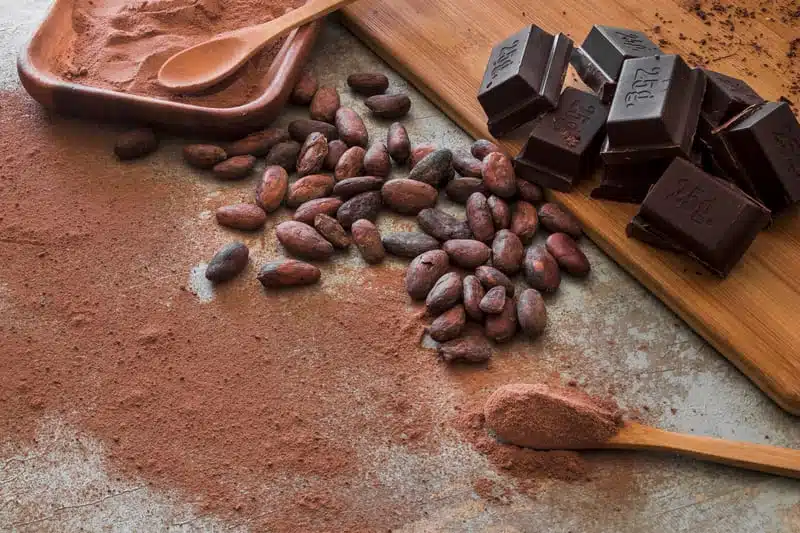How we deal with the high fat content
Micronization of cocoa is a delicate and complex process, as cocoa is a raw material with special characteristics that complicate its transformation into a fine powder. In particular, thehigh fat content and the presence of abrasive residues can be a challenge for grinding equipment.
In fact, cocoa naturally contains a good amount of cocoa butter, a fat that tends to make the powder sticky and difficult to process. For this reason, the choice of technology and plant design must be designed to handle these characteristics without compromising the quality of the final product.
The most common issues in cocoa micronization
Critical issues in the process can be summarized as follows:
- Powder adhesion to surfaces: cocoa butter can cause powder to adhere to theinside of the grindingchamber or rotating parts, causing blockages and reducing efficiency.
- Wear from abrasive particles: cocoa husks can be present as very hard particles and can cause premature wear of metal parts.
- Overheating: heat generated by friction between particles can cause the powder to compact or clump together, worsening fluidity.
- Contamination risk: in a food process, it is essential to avoid contamination by foreign dust or residues from other materials.
These aspects require careful design and specific technical solutions to ensure that the product remains consistently high quality.

How can the fat content challenge be addressed
To manage thehigh fat content in cocoa and ensure effective pulverization, some technological strategies can be adopted:
- Cryogenic cooling: Liquid nitrogen or other cooling agents are used in some lines to maintain very low temperatures during grinding. This helps reduce particle size without melting the cocoa butter, keeping the powder fluid and “grainy.”
- Special design of grinding chambers: mill surfaces and geometry should be designed to minimize direct contact between powder and hot or rough surfaces, thus preventing adhesion.
- Use of microseparators and air classifiers: these devices allow very small particles to be separated from coarser ones, improving the quality of the final powder.
- Employ wear-resistant materials and coatings: to avoid metal contamination and increase the service life of implants.
Cimma technologies: the ideal solution
At Cimma, different types of mills and specific machinery can be used for cocoa micronization, which allow for particle size reduction down to very fine particle sizes of less than 80 microns.
Here are some examples:
- Hammer mills For initial crushing and panel preparation.
- Universal or pin mills for intermediate grinding, capable of working with foods that have medium to high fat content.
- Micronizers For the production of very fine and uniform powders.
- Air classifiers and dynamic selectors, which make it possible to obtain the desired particle size and avoid contamination by too large or unwanted particles.
Often these machines must be used with cooling, closed-loop, controlled-atmosphere systems, frequently in synergy to optimize yield and quality.
Why a well-controlled process is important
A poorly managed micronization process can cause several problems. For example, the powder can become too wet and sticky, resulting in difficulties in handling and processing. In addition, the formation of very small agglomerates can alter the taste and texture of the final product. Finally, direct contact between powder and hot or worn surfaces can cause unwanted contamination or chemical changes.
For this reason, it is critical that the grinding system be designed to maintain very low temperatures and ensure a continuous and homogeneous flow of powder.
Benefits of Cimma’s cocoa technology
- Automated processes tailored to every production need.
- ATEX-certified safety, essential for preventing hazards in the presence of flammable dust.
- Energy efficiency with integrated cooling systems.
- Constant technical assistance and support at all stages.
If you are looking for a reliable partner for cocoa micronization or complex raw material processing, Cimma is the ideal answer.


